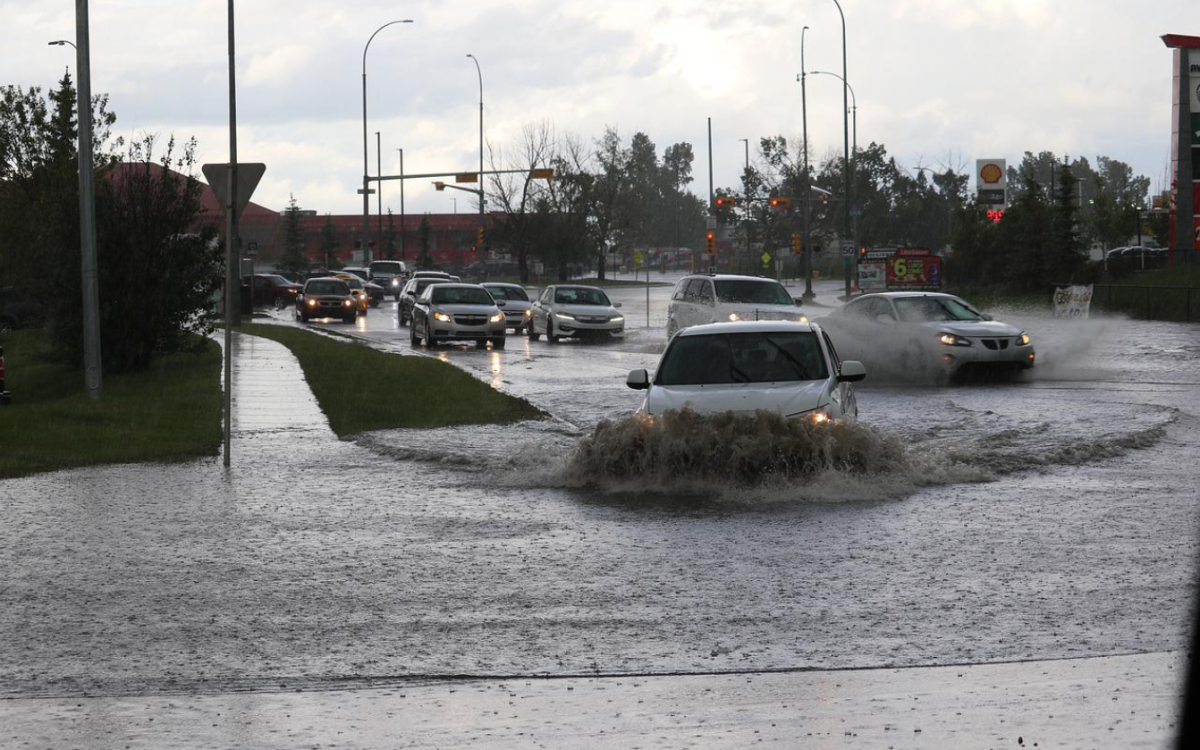Exploring Social Vulnerability to Multiple Hazards and Cascading Effects in Halmstad, Sweden

The focus of this study is the emerging research topic of multiple water hazards, which refers to hazardous events that occur simultaneously, cascadingly, or cumulatively over time (see e.g. United Nations Office for Disaster Risk Reduction, UNISDR 2016). Traditionally, impacts of water hazards have been assessed separately which may lead to an underestimation of risk (Zscheischler et al. 2018).
Case content
Potential future effects of global climate change include more frequent multiple hazards. In combination with society’s increased dependency on critical infrastructure, this is likely to affect social vulnerability and adaptive capacity. However, social vulnerability is rarely assessed in relation to new risks that may arise in the event of disruptions of critical infrastructure, and risk assessments often only consider impacts from single hazardous events rather than multiple hazards.
The aim of the case study was, therefore, to assess what groups can become vulnerable to disruptions in infrastructure. Pre-existing vulnerabilities can make certain social groups more affected than others in the case of a disruptive event, but new vulnerable groups might also emerge. The focus of the case was on exploring the impacts and cascading effects of multiple hydrometeorological extreme events in the Swedish municipality of Halmstad at the Swedish south-western coast.
The case team (Stockholm Environment Institute) gathered a diverse group of stakeholders representing different areas of the municipality’s provision of critical services. Stakeholders were engaged in a participatory process to co-explore what group renders vulnerable in case of multiple hydrometeorological hazards and cascading effects. A scenario-based approach was applied in which stakeholders co-designed scenarios using their local knowledge and sectorial expertise.
Research Innovations
Case study 6 resulted in the following innovations:
a) improving knowledge co-production processes and stakeholder engagement;
b) using a scenario-based approach as a tool for stakeholder discussions, and to address limitations in data availability; and
b) shifting focus from interactions among natural hazards and their intermediate impacts to understanding their impacts on social vulnerabilities.
Study areas
Municipality of Halmstad, Sweden
Stakeholders involved
The case study involved stakeholders from the municipality of Halmstad working with climate adaptation, water services, rescue services, social services, risk management, urban planning, and environmental protection.
Summary data collection
Qualitative data was acquired through stakeholder dialogues, workshops, interviews, a survey, and a scoping study. The social vulnerability index was developed using open data Statistics Sweden and Delmos.
Results
1) Final documented output:
André K, Englund M & Gerger Swartling Å (2022). Testing the Impact Chain Model: Exploring Social Vulnerability to Multiple Hazards and Cascading Effects. SEI Project Brief. Stockholm Environment Institute. https://doi.org/10.51414/sei2022.041
Englund M, André K, Barquet K & Segnestam L (2022). Weather, Wealth and Well-Being: Cascading Effects of Water-Related Hazards and Social Vulnerability in Halmstad, Sweden. SEI Discussion Brief. Stockholm Environment Institute. https://doi.org/10.51414/sei2022.038
Englund M, André K, Barquet K & Segnestam L (2022). Väder, välstånd och välbefinnande: Vattenrelaterade risker, samhällsviktig verksamhet, och social sårbarhet i Halmstad, Sverige. SEI Discussion Brief. Stockholm Environment Institute. https://doi.org/10.51414/sei2022.039
Barquet K, Berg P, Hieronymus M, Vieira Passos M, André K, Segnestam L, Englund M, Inga K & Bin Ashraf F (2022). Assessing Cascading Effects from Multiple Hazards: An Example from Sweden. https://doi.org/10.51414/sei2022.042
2) Good practices in stakeholder engagement, co-production of knowledge, and presentation of results.
3) Methodological improvements of the Impact Chain-based climate risk and vulnerability assessment.
4) Added value for stakeholders:A better understanding of social vulnerability in light of multiple hydrogeological hazards and cascading effects.
Case study responsible
Stockholm Environment Institute (SEI)
Contact
Documentation
André K, Englund M & Gerger Swartling Å (2022). Testing the Impact Chain Model: Exploring Social Vulnerability to Multiple Hazards and Cascading Effects. SEI Project Brief. Stockholm Environment Institute. https://doi.org/10.51414/sei2022.041
Englund M, André K, Barquet K & Segnestam L (2022). Weather, Wealth and Well-Being: Cascading Effects of Water-Related Hazards and Social Vulnerability in Halmstad, Sweden. SEI Discussion Brief. Stockholm Environment Institute. https://doi.org/10.51414/sei2022.038
Englund M, André K, Barquet K & Segnestam L (2022). Väder, välstånd och välbefinnande: Vattenrelaterade risker, samhällsviktig verksamhet, och social sårbarhet i Halmstad, Sverige. SEI Discussion Brief. Stockholm Environment Institute. https://doi.org/10.51414/sei2022.039
Barquet K, Berg P, Hieronymus M, Vieira Passos M, André K, Segnestam L, Englund M, Inga K & Bin Ashraf F (2022). Assessing Cascading Effects from Multiple Hazards: An Example from Sweden. https://doi.org/10.51414/sei2022.042
